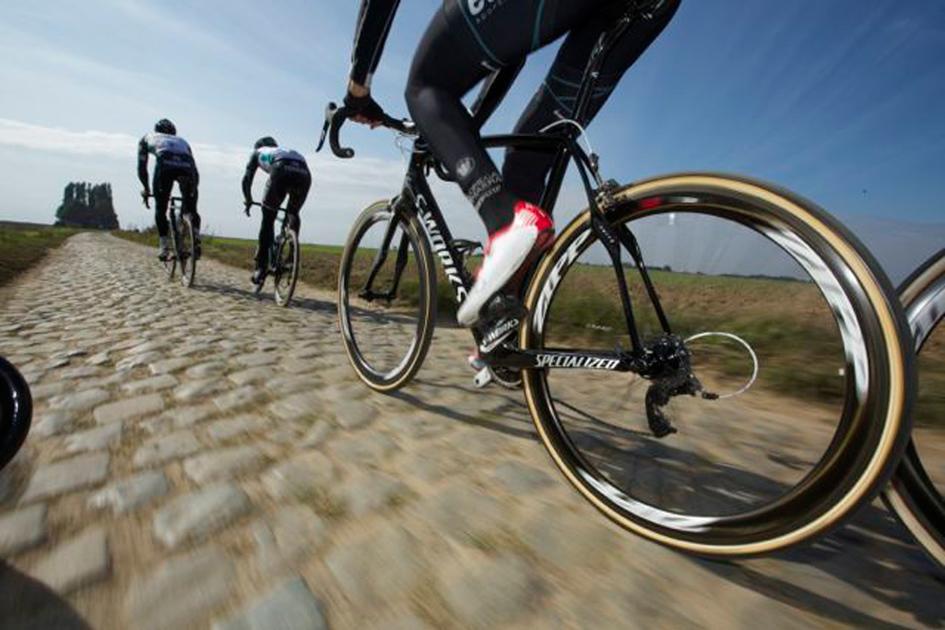Evolution of Road Bikes – What’s Changed in the Last 10 Years
Walk into any bike shops or just browse around the bike manufacturers’ website and you’ll see a lot of modern-looking road bikes around.
Rewind back 10 years ago, you’ll probably be the standout cyclists in the bunch if you’re riding a carbon frame with a 11-speed drivetrain.
Today that’s a norm.
In this article, I’ll discuss the changes road bikes have undergone in the last 10 years
On This Page
Race vs Endurance Framsets
One bicycle no longer does it all, well, not on paper at least. Specialized was the first to introduce a comfortable endurance road bike, the Roubaix, back in 2004.
Your option in the late ‘90s was a very stiff, steep angle, super-short chainstay race bike, and that didn’t work because you couldn’t fit real-world tires. It was harsh. It wasn’t the right bike for many hours in the saddle. So, we made the Roubaix.”
– Rodney Hines, Inventor of the Original Roubaix
Other brands followed their lead and created their own branded version of a comfortable sportive/endurance or gran fondo bike, splintering the bicycle marketplace into specific categories.
These days, you are spoilt for choices for various with framesets characteristics targeted to such niches as aero, lightweight, all-road, endurance, and gravel to name a few.
Read More : 5 Things to Know Before Getting A Professional Bike Fit
Advancement in Carbon Technology
Carbon fiber technology has developed enormously since the edition of the first carbon bicycle produced in the UK by Carlton Cycles in 1971. Today, unidirectional composite fibers come in sheets of pre-preg (resin already added) carbon that are easy to manipulate.
Once cut, the individual pattern pieces can be layered in specific directions, shapes, and configurations to develop desired bicycle frame characteristics.
Hours of work go into each composite frame, but the versatile material properties of carbon, combined with the latest innovations in its production, mean today’s engineers are producing ever lighter and more responsive carbon racing bicycles, components, and accessories.
Read More : Should You Get A Titanium or Carbon Bike?
Ultralight Frame and Fork
Regardless of your preferred material, advances in research and technology have resulted in the creation of frames, forks, and components that are lighter than ever.
For example, the S-Works Aethos frame and fork weigh 622g and 311g respectively. That’s a sub-1kg frame/fork combined which is a rarity.
Thinner tube sidewalls, improved production methods, and high-tech engineering mean no more extra material to add precious grams. But when does light become too light?
Products are dropping in weight but increasing in price!
Read More : Why Carbon Bike Frames Have A Maximum Rider Weight Limit?
Carbon Frames at Lower Prices
Once only produced in small numbers reserved for elite riders or those with a healthy bank account, carbon production technology has met the masses. Today precise 2D CNC plot-cutting devices cut up to 500 individual and complex shapes needed to make a carbon frame out of large pre-preg carbon sheets.
Computer precision and speed mean less waste and improved production times, which parlay into more friendly price points. Something to keep in mind is that the use of carbon alone does not, by definition, make a frame lighter.
To meet consumer’s needs at a lower price point, lesser quality carbon may be used, which requires more layers to achieve comparable durability; more layers can equal added weight.
Carbon Wheelsets
Once a material reserved for NASA and Formula 1, carbon has moved into the cycling mainstream through an entire range of components and accessories, particularly wheelsets.
Improved computer technology, engineering, research, precision tool manufacturing, and the ready availability of pre-preg carbon sheets have translated into quality, durable, and lightweight carbon clincher wheelsets at prices that won’t make your eyes water.
Read More : Is Building A Custom Wheelset Worth It?
Smooth Electronic Shifting
Kudos to Mavic, who first introduced Zap electronic shifting in 1992, but the technology of the time didn’t match their ambition. In 2009, Shimano brought Dura Ace Di2 7970 to the market, and it was an immediate hit.
The Shimano system requires a battery and a network of e-cables routed throughout the frame and connected to a junction box.
SRAM joined the electronic shifting game in 2015 with its highly-anticipated wireless RED e-Tap which eliminated the need to fuss with routing cables.
Have cyclists reached the height of laziness?
The gesture is the same, so what’s the big deal? Try it and you’ll see.
Lower Gears for Steeper Terrains
Bicycle gears used to mean 12-23T 9-speed cassettes with a 52/42T crankset. Just thinking about it makes my legs hurt!
Say hello to lower gears and compact cranksets.
The addition of more speeds and larger rear cogs has resulted in gear ratios adapted for a wide variety of terrains with 28, 30 and 32T being the new norm. Even larger rear cassettes used with 1x systems are becoming more prevalent.
13-Speed Drivetrain
10-speed cassettes were introduced to the market in 2004. They had their time in the limelight until 2012 when 11-speed bumped them to the second step on the podium.
Now, 12-speed is the norm, yet 10 and 11-speed bicycles are still available for sale today. Just how far can engineering push the number of cogs that will fit into a bicycle’s rear triangle?
Ask Campagnolo. They were the first to bring a 13-speed cassette, albeit for a 1x system, to market in 2020.
1x may be the future for all bicycles, maybe we’ll know in another 10 years.
Wider and Tubeless Tires
Old-school roots may cringe and yell, no!, no!, no! to riding 30c tires on the road. Riding skinny, inflated to maximum high pressure, was the way to go.
Time to join the 21st Century and adopt the engineering and research that has gone into wheel aerodynamics and tubeless technology.
Undeniable scientific research shows that wider tubeless tires, run at lower pressures, are not only faster but more comfortable too.
Before you jump onto the tubeless bandwagon, there are some things you need to know. After all, tubeless is a different beast altogether.
Read More : Tubeless vs Clincher vs Tubular Tires – Everything You Need to Know
Proliferation of Disc Brakes
Today’s road bike disc brakes have roots in motorcycles and mountain bikes. While more technically challenging for amateurs to service and maintain, disc brakes perform in all weather, road and trail conditions.
Disc brakes are now ridden in the pro peloton, but is this purely at the demand of bicycle manufacturers, or a natural progression thanks to their reliability?
What about the added weight? Although the road cycling community has yet to respond to these questions, road disc brakes are here to stay.
Have you seen any new road bikes with caliper brakes recently? I doubt so.
Read More : The Beginner Guide to Bicycle Disc Brakes
Thru-Axles Standardization
With the onset of disc brakes and the extreme forces they transmit to the frame and fork when in use, the slender and pliable quick-release roadies know and love are being relegated to retirement in favor of thru-axles.
Perhaps one reason some pros aren’t fans of disc brakes lies in the extra time thru-axles require for wheel changes as compared to QRs, but that’s not a game changer for most of us.
These days, the standard thru-axle standard for road bikes is 12x100mm for front and 12x142mm for rear.
Internally Routed Cables
Clean lines on a road bicycle mean hidden, internally routed cables to accommodate public demand, improved aerodynamics, and wired electronic shifting.
While internally routed road bikes definitely look hot, they can be a nightmare for professional and DIY mechanics. SRAM picked up on this with the introduction of Di2, which may explain why their e-Tap system is wireless. Perhaps their engineers actually work on the bikes too.
In a presumed effort to match their competition, Shimano has recently filed for a wireless patent.
Read More :
Compact Bend Handlebars
Road handlebars now have a shallower bend. Better known as compact, this change in shape, which has vastly become the norm, means cyclists can ride in the drops without a significant change in position.
Reducing the bend depth improves handlebar weight and stiffness, and makes the brake levers more accessible, especially to riders with smaller hands.
GPS Devices and Cycling Apps
If you drive, you can attest to the benefits of having a GPS in your car. No more getting lost, asking strangers for directions, or pulling over on the side of the road to fish a map out of the glove box (not to mention folding it back up!).
Well, the bike GPS and computers have provided the same benefits to cyclists everywhere while paving the way for new technology companies such as Strava and Ride with GPS.
These advances mean new segments, roads, and routes to share, compare, and explore while keeping track of useful metrics for training purposes.
Read More : How to Find New Gravel Roads and Trails Near You
Indoor Cycling and Smart Trainers
Gone are hours of discomfort spent indoors riding a basic mag trainer to avoid soggy roads or cold winter temperatures. Are indoor riding and racing becoming a trend?
Who would have believed that 10 years ago?
A handful of fantastic apps, accessories, improved computer technology, faster internet connections, and smart trainers have put indoor training and racing on the map.
Cyclists can ride or compete with their friends from the comfort of their own home or pain cave. Whether you prefer the virtual world of Zwift, or the augmented reality of Rouvy or FulGaz, you’ve probably already got a smart trainer, or have plans to get your own.
Battery Assisted Road Bicycles
Ever improving battery technology means that road bicycles can be fitted with power assistance systems while retaining the look of traditional road bikes.
A near normal aspect reduces the chances of any potential stigma for its pilot. Opinions may be mixed on the subject, but battery-assisted road bicycles have introduced entire new populations to the sport and permitted older roadies, those with medical limitations, and non-riding partners to get out there and join in the fun.
These days, you can barely differentiate a road e-bike. Check out the Scott eRide or the Orbea Gain.




